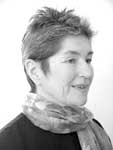|

If
you ask Dr. McCune… Every
Child is an Individual
After
many decades of enforced segregation in “contained” classrooms,
often labeled with diagnoses that quickly became pejorative, children
with disabilities gained the right to inclusion with their peers
in the least restrictive environment compatible with their needs.
Over this same period of time the inappropriate over-identification
of disabilities in racial and linguistic minority children has
been recognized and sharply declined. Today the recognition of
a range of specific learning disabilities, in addition to those
of sufficient severity to warrant special education has reduced
the stigma associated with disability and opened the door to greater
recognition of the needs of all children for some individual attention
to their learning needs.
At the Lincoln Professional Development School (PDS) in New Brunswick,
NJ, partnership with the Rutgers University Graduate School of
Education (GSE) led faculty at the school to design a program
of full inclusion for children with disabilities that suited an
economically poor urban school. In two years of study and planning
Lincoln faculty visited other schools, attended professional development
seminars, and worked to determine what “inclusion” could mean
for their students. They evolved a team approach, where for a
given grade level two non-special education teachers, a special
education teacher, and a teaching assistant would develop two
grade level classrooms including approximately 15 non-identified
and five special education students in each. Staff volunteered
for these innovative assignments which would require close collaboration.
There would always be two staff members in each classroom, and
planning would need to include the team of four, initially with
consultation from GSE faculty. This structure kept costs for the
school district down, as the special education staff were freed
for inclusion duty by incorporating the number of their assigned
students into the inclusion classrooms.
Once special education teachers join the broader classroom team
their emphasis on individual needs can find more complete expression.
At Lincoln PDS the teams do not divide responsibility by disability
status, but by child levels in various subjects, by subject matter
interest on the part of staff and by staff talent, which for special
education teachers includes recognizing and designing approaches
to meet the special learning needs of all students. A visitor
finds it impossible to identify the “identified” students in the
inclusion classroom, and the children themselves seem to see each
other as peers, all individual, all similar. In the four years
since this program began, the original inclusive grade four has
grown to include grades four to eight, and grades K to three all
now include children with disabilities with appropriate support.
#
Dr.
Lorraine McCune is a professor at the Rutgers University Graduate
School of Education and serves as advisor to educational toy company,
General Creation. She can be reached at www.generalcreation.com
in the “Ask Dr. McCune” section.
Education Update, Inc., P.O. Box 20005, New York, NY 10001. Tel:
(212) 481-5519. Fax: (212) 481-3919. Email: ednews1@aol.com.
All material is copyrighted and may not be printed without express consent of
the publisher. © 2001.
|

